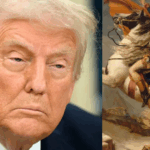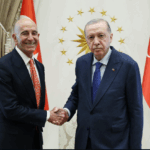Summary & Additional Remarks by Geopolist | Istanbul Center for Geopolitics:
At first glance China looks like an economic juggernaut racing neck-and-neck with the United States. Beijing’s statisticians report a gross domestic product that already amounts to roughly two-thirds of U.S. output, and popular commentary routinely warns that the gap could close within a decade. Yet a growing body of academic work, firm-level data and quantitative trade modelling paints a very different picture: China’s ascent is impressive but brittle, sustained by opaque bookkeeping, investment overkill and a deep reliance on multinational value chains ultimately controlled from the United States and its allies.
A Statistical Mirage
Authoritarian governments have strong incentives to exaggerate economic success, and China is no exception. Using satellite night-lights as an independent proxy for real activity, economists Luis Martinez show that autocracies overstate growth by about one-third—precisely the margin needed to turn China’s official GDP into a figure closer to half of America’s, not two-thirds. Even former Chinese premier Li Keqiang privately dismissed headline growth numbers as “for reference only,” an assessment echoed by Logan Wright and Daniel Rosen of the Rhodium Group.
Investment Without Returns
China’s headline output is further inflated by an unusually investment-heavy growth model. For three decades gross capital formation has hovered above 40 percent of GDP, financing ever more property developments and trophy infrastructure that fail to earn their keep. Financial analyst Michael Pettis details how such over-investment leaves local governments and banks with mountains of low-yield assets and pushes the housing vacancy rate above 20 percent. In market economies unproductive projects are eventually written off, but in China they linger on corporate and provincial balance sheets, propping up reported GDP while dragging down long-run productivity.
Who Keeps the Profits?
Output is not power unless it generates profit and controls technology. By that harder metric the United States and its treaty partners remain dominant. In the 2022 Forbes Global 2000 ranking U.S. firms captured 38 percent of worldwide corporate profits and companies headquartered in allied countries another 35 percent; Chinese firms, heavily concentrated in low-tech banking and construction, earned only 16 percent. That gap is even wider in strategic sectors—semiconductors, aerospace, biotechnology—where U.S. and allied companies command most of the patents, design capability and supplier choke-points.
The Asymmetry of Decoupling
Because China’s high-tech production is knitted into supply chains orchestrated abroad, comprehensive Western sanctions would bite far harder in Beijing than in Washington. A dynamic trade model from the Centre for Economic Policy Research shows that a technology-focused cutoff would hit Chinese welfare five-to-ten times more than American welfare; most of the pain comes from losing access to foreign know-how rather than lost sales.CEPR U.S. and allied economies would feel an initial shock but could reroute production, while Chinese factories deprived of critical inputs would face a Great-Depression-scale contraction.
Leverage to Be Used Sparingly
Precisely because the economic weapon is so powerful, the article contends, firing it in peacetime would squander deterrence and risk unintended escalation. A premature cutoff could convince Beijing that its strategic window is closing and hasten a military move against Taiwan. Worse, many American allies—Germany, Japan, South Korea—would hesitate to join a costly embargo absent a clear security crisis, blunting its impact.
Building an Economic Alliance
Instead, Washington should keep the powder dry and prepare for collective action in the event of overt aggression. Preparation means:
- Creating a formal economic-security pact with Europe, Japan, Australia, South Korea and other partners to map vulnerabilities, pre-approve sanctions packages and organise mutual assistance.
- Expanding national stockpiles of rare-earths and other critical minerals to Cold-War levels, while funding alternative supply sources and domestic processing.
- Institutionalising economic statecraft through dedicated directorates at Treasury, Commerce and the National Security Council that conduct scenario planning as rigorously as the Pentagon plans kinetic operations.
A Fragile Giant
Taken together, the evidence depicts China as a Potemkin economic superpower: formidable façades masking structural fragility. The United States still enjoys the deeper capital markets, the more innovative firms and—through the dollar system—commanding influence over global finance. Preserving that edge requires strategic restraint: husband the leverage for the day it is needed, rather than dissipating it in symbolic peacetime decoupling. By recognising the limits of China’s rise and calibrating its response, Washington can deter revisionism without stumbling into an avoidable great-power war.
Read more here.







